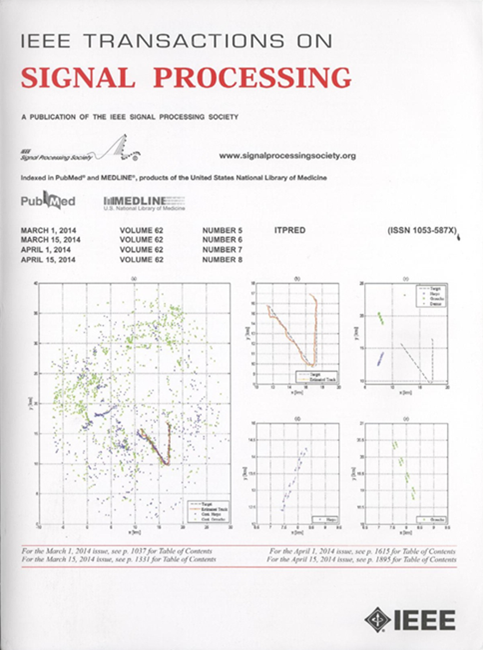Hybrid DTD-AOA Multi-Object Localization in 3-D by Single Receiver Without Synchronization and Some Transmitter Positions: Solutions and Analysis
IF 4.6
2区 工程技术
Q1 ENGINEERING, ELECTRICAL & ELECTRONIC
引用次数: 0
Abstract
This paper addresses the multi-object localization problem by using a hybrid of differential time delay (DTD) and angle-of-arrival (AOA) measurements collected by a single receiver in an unsynchronized multistatic localization system, where two kinds of transmitters, intentional transmitters at known positions and unintentional transmitters at unknown positions, are used for the illumination of the objects. By integrating the DTD and AOA measurements, we first derive a new set of transformed observation models relating to the object positions, and then investigate the three cases of intentional transmitters only, a mix of intentional and unintentional transmitters, and unintentional transmitters only. Localization for the first case is addressed by a linear weighted least squares (LWLS) estimator and the other two are solved by applying semidefinite relaxation followed with an LWLS estimator. Furthermore, we conduct a thorough theoretical analysis. It shows that incorporating unintentional transmitters at unknown positions is beneficial to improve the localization performance, and increasing the number of objects will also improve the positioning accuracy when unintentional transmitters are used. Additionally, a theoretical bias analysis is conducted, based on which a bias-subtracted solution is given. Both theoretical mean square error analysis and simulations validate well the good performance of the proposed methods.单接收机无同步和若干发射机位置的混合DTD-AOA三维多目标定位:解决方案与分析
本文通过在非同步多静态定位系统中使用单个接收器收集的差分时间延迟(DTD)和到达角(AOA)测量数据的混合方法来解决多目标定位问题,其中两种发射器,已知位置的有意发射器和未知位置的无意发射器用于物体的照明。通过整合DTD和AOA测量,我们首先导出了一组新的与目标位置相关的变换观测模型,然后研究了三种情况,即只有有意发射机、有意和无意发射机混合以及只有无意发射机。第一种情况的定位是通过线性加权最小二乘估计来解决的,另外两种情况的定位是通过应用半定松弛和LWLS估计来解决的。此外,我们进行了深入的理论分析。结果表明,在未知位置加入无意发射机有利于提高定位性能,增加目标数量也能提高无意发射机的定位精度。此外,还进行了理论偏差分析,并在此基础上给出了减偏解。理论均方误差分析和仿真均验证了所提方法的良好性能。
本文章由计算机程序翻译,如有差异,请以英文原文为准。
求助全文
约1分钟内获得全文
求助全文
来源期刊

IEEE Transactions on Signal Processing
工程技术-工程:电子与电气
CiteScore
11.20
自引率
9.30%
发文量
310
审稿时长
3.0 months
期刊介绍:
The IEEE Transactions on Signal Processing covers novel theory, algorithms, performance analyses and applications of techniques for the processing, understanding, learning, retrieval, mining, and extraction of information from signals. The term “signal” includes, among others, audio, video, speech, image, communication, geophysical, sonar, radar, medical and musical signals. Examples of topics of interest include, but are not limited to, information processing and the theory and application of filtering, coding, transmitting, estimating, detecting, analyzing, recognizing, synthesizing, recording, and reproducing signals.
 求助内容:
求助内容: 应助结果提醒方式:
应助结果提醒方式:


